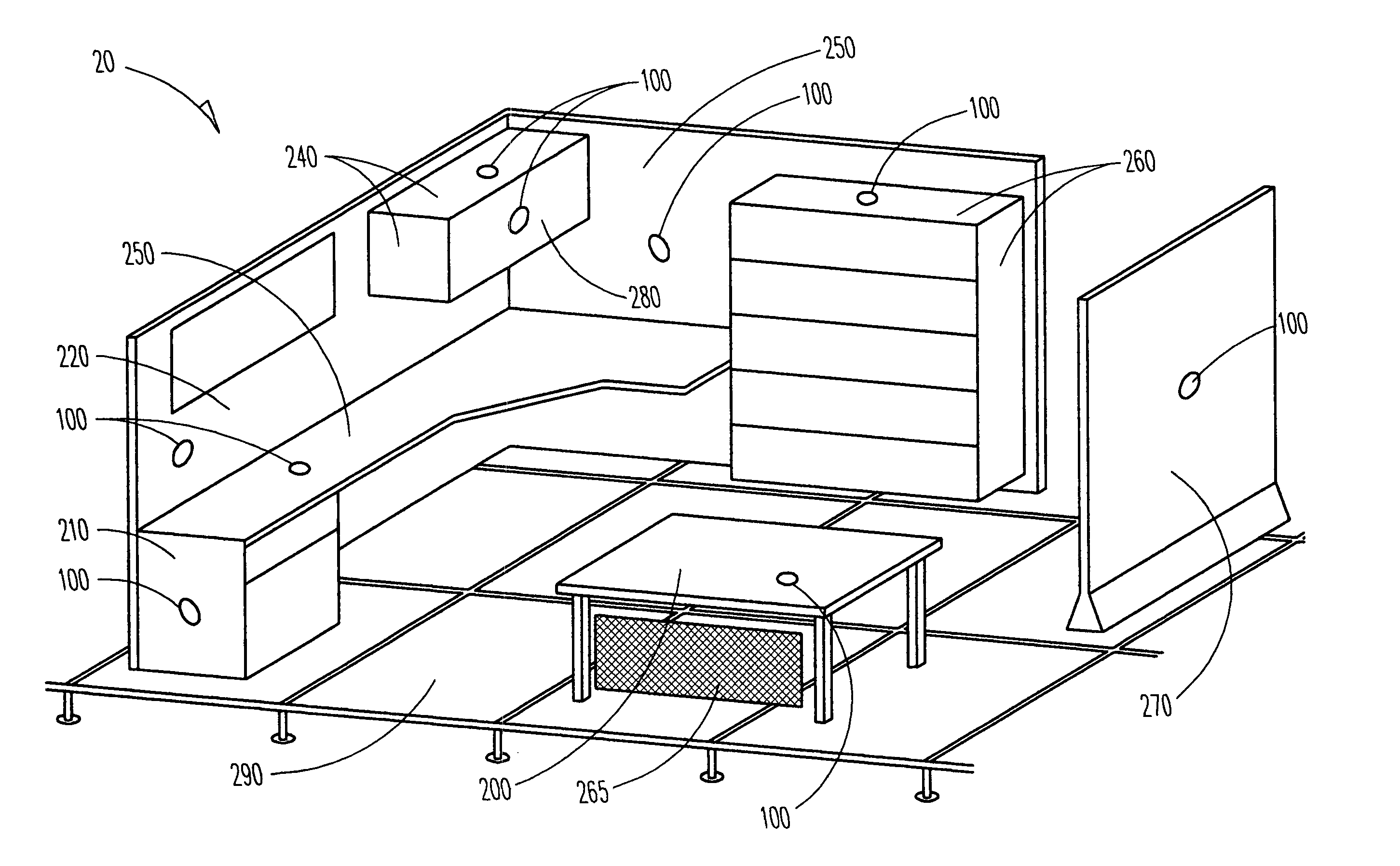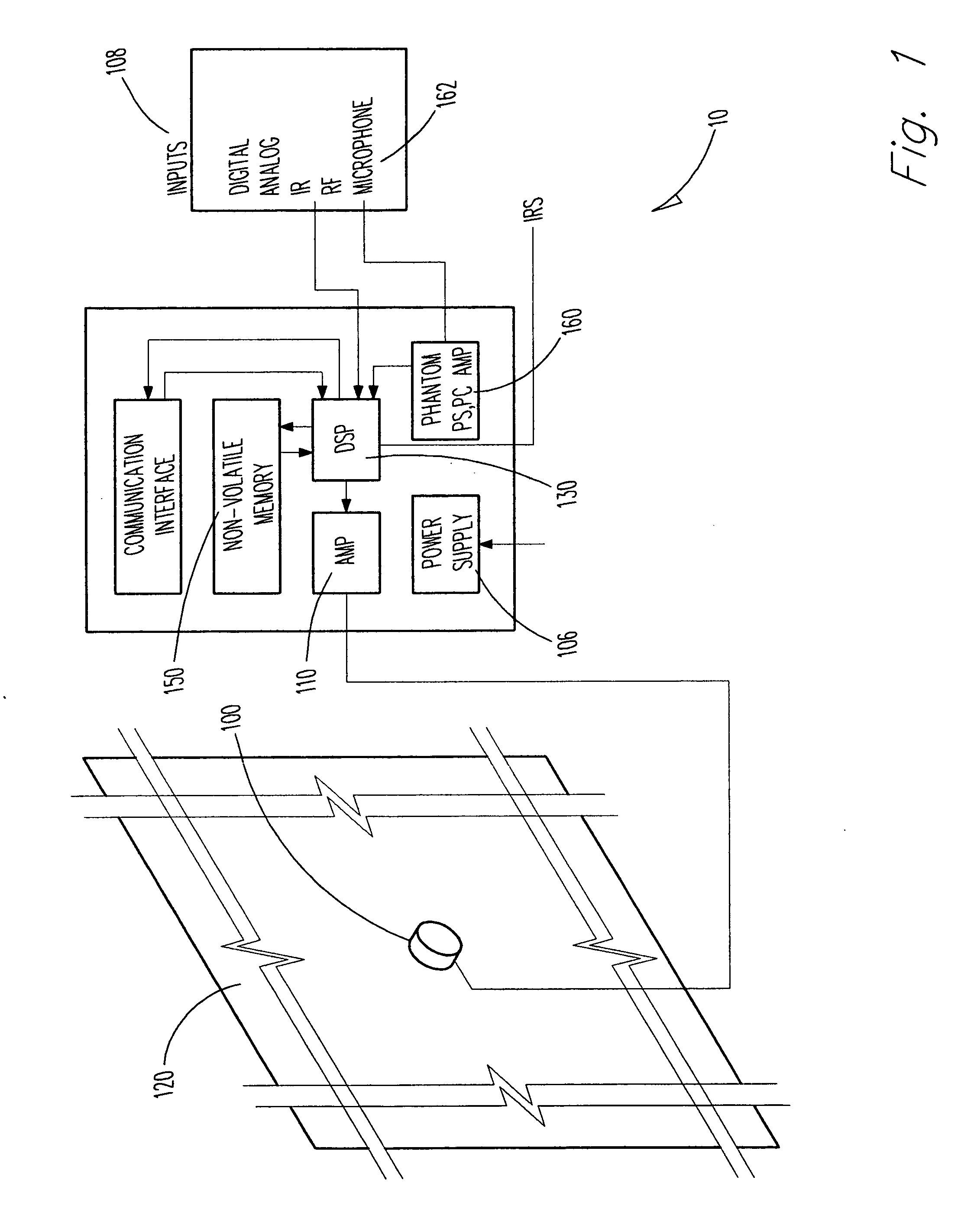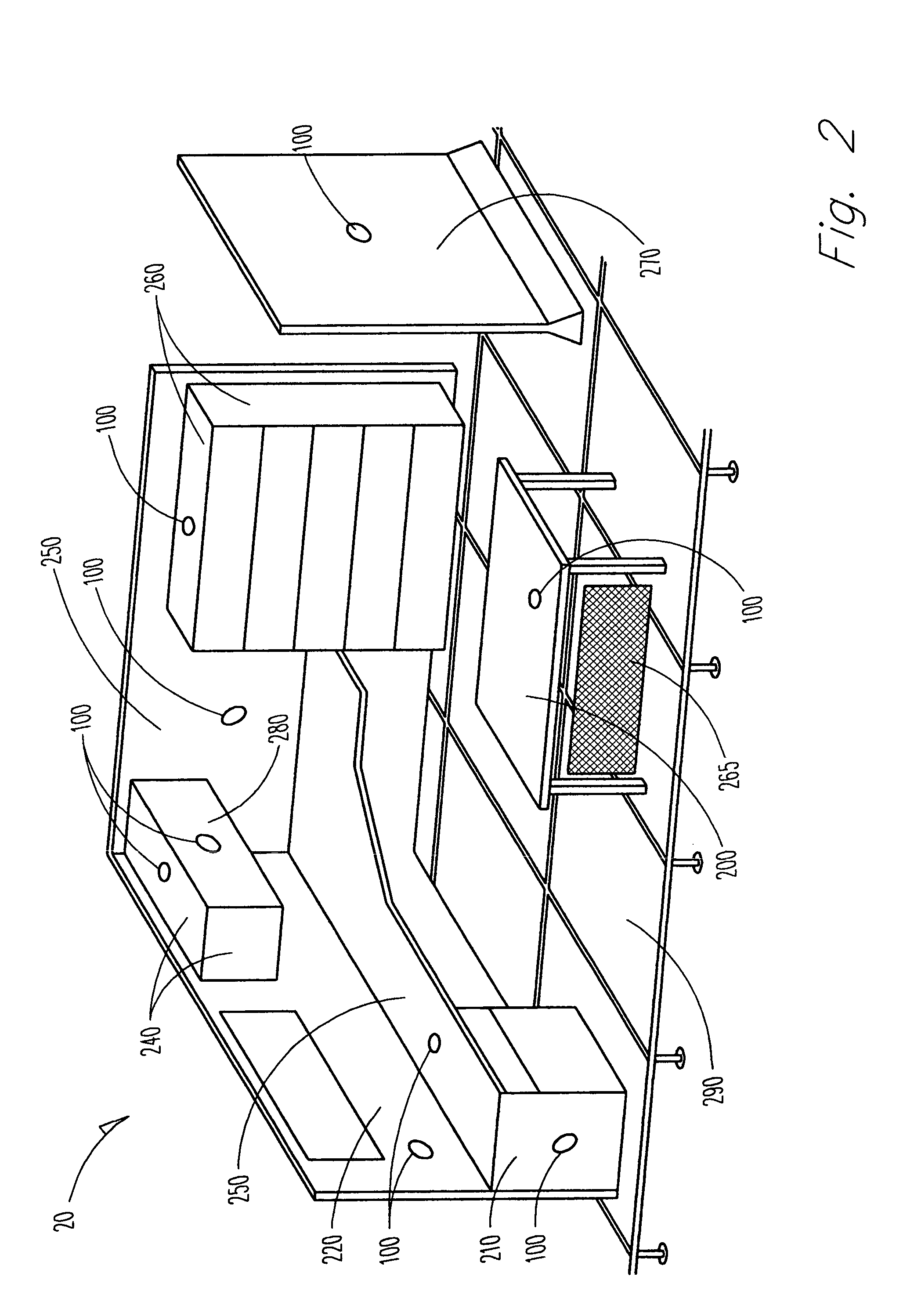Embedded audio system in distributed acoustic sources
a technology of distributed acoustic sources and embedded audio, applied in the field of embedded audio systems, can solve the problems of difficult to achieve optimal worker efficiency, difficult to effectively cover the sound of masking, and public spaces are often plagued by environmental noise, so as to reduce the need for notch filters, suppress room mode resonance, and suppress feedback amplification gain
- Summary
- Abstract
- Description
- Claims
- Application Information
AI Technical Summary
Benefits of technology
Problems solved by technology
Method used
Image
Examples
Embodiment Construction
[0059]Referring first to FIG. 1 the acoustic system 10 is generally described as an acoustical soundboard panel or body 120 and an acoustic momentum type transducer 100. In the preferred embodiment, said transducer 100 is in acoustic association with said soundboard 120. A power amplifier 110, and means for processing a sound signal 130, at least one input acoustic signal 408 and a power supply 106 complete the basic system 10. In the preferred embodiment, means to process is a Digital Signal Processor. The system 10 may include an active acoustic source 12 such as background music or masking noise. The acoustical soundboard 120 comprises a traditionally non acoustic body or geometric definition and is typically comprised of, but not limited to, gypsum wallboard, wood sheet goods, fiber reinforced composites, structural panels comprising of skins and core, consolidated organic fiber, paper, steel, aluminum, glass, wood, consolidated mineral fibers, plastic and other materials where ...
PUM
 Login to View More
Login to View More Abstract
Description
Claims
Application Information
 Login to View More
Login to View More - R&D
- Intellectual Property
- Life Sciences
- Materials
- Tech Scout
- Unparalleled Data Quality
- Higher Quality Content
- 60% Fewer Hallucinations
Browse by: Latest US Patents, China's latest patents, Technical Efficacy Thesaurus, Application Domain, Technology Topic, Popular Technical Reports.
© 2025 PatSnap. All rights reserved.Legal|Privacy policy|Modern Slavery Act Transparency Statement|Sitemap|About US| Contact US: help@patsnap.com



